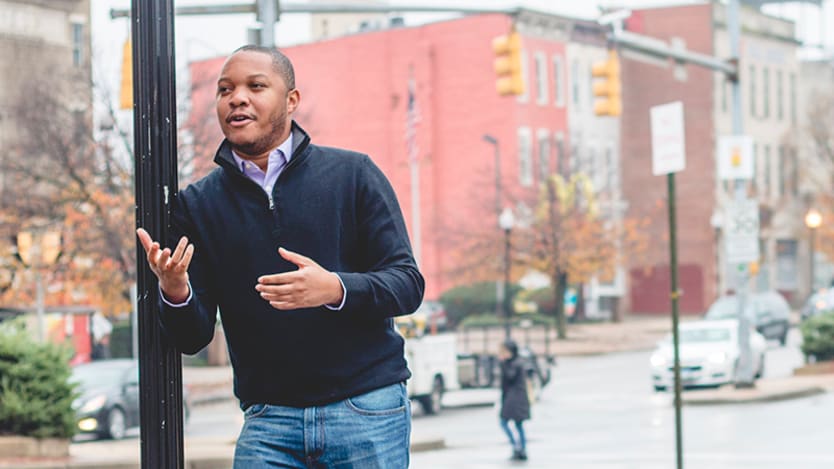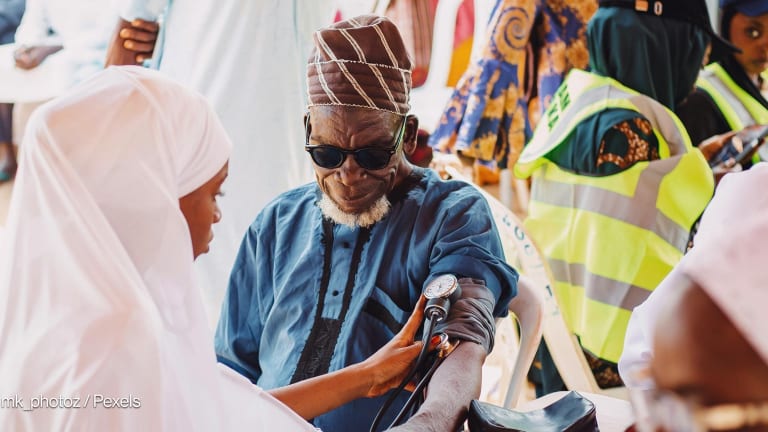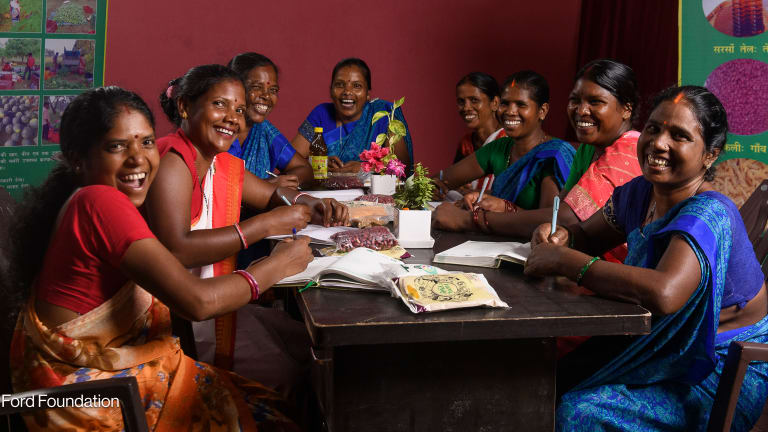
SAN FRANCISCO — The wealthiest 1% own 50% of the world's wealth, and some fear that organizations with good intentions are exacerbating that inequality.
Last week, at the Social Capital Markets Conference in San Francisco, the nonprofit organization Business Alliance for Local Living Economies relaunched as Common Future, with a new agenda demanding that philanthropists and investors raise the bar beyond “doing well by doing good.”
“There is one ideology that has governed all of our actions, individuals, and institutions — that suggests that we must continuously grow.”
— Rodney Foxworth, executive director, Common FutureDevex spoke with Rodney Foxworth, executive director of Common Future, about his vision to remake the economy in the best interest of the many, rather than the few.
This conversation has been edited for length and clarity.
While Common Future works with communities in North America to change the status quo of business, philanthropy, and investment, I think your message may resonate with our community of international development professionals. Can you expand on the shift you hope to see away from doing well by doing good?
Historically, philanthropists and investors have put their own interests above those of the individuals and communities they were founded to serve, but there’s an opportunity to think how those endowments and investments can actually empower communities.
The whole concept of impact investing is really about doing well by doing good. And the question we’re asking investors to think deeply about and act on is: Is it really good enough to do well by doing good, or do we actually need to do good by giving up more?
More on impact investing and philanthropy
► How funders are fighting philanthropy that is 'top down, closed door, expert driven'
► Social impact incentives? A new tool for supporting impact
► For Pro subscribers: 3 ways to prepare for the 'new wave of innovation in philanthropy'
There’s been a persistent conversation in the impact investing world about market-rate returns and concessionary returns. At Common Future, we look at all of the exploitation and extraction that has occurred through status quo investing, and we really want to disrupt that concept and look at it as restorative and even, dare I say, reparative investing.
We need to acknowledge both the historical and contemporary power dynamics that exploit and extract from communities and natural resources rather than restoring what was taken.
You have said you envision an economy where economic control is shifted to people and communities who have been marginalized. Are there funders who focus on developing country contexts?
One of the organizations we look to as an institution working in the global south reconceptualizing how investment and philanthropy can operate is Thousand Currents. They have really focused their efforts on authentically working with and taking leadership from the communities they’re serving philanthropically. They started the Buen Vivir fund, which really rebalances the power dynamic between investors and communities they are invested into in which they are equal partners.
Another example is the Swift Foundation, a relatively small family foundation that works particularly in indigenous communities. Many philanthropic institutions are looking at return on investment to increase their endowments. But Swift has said ‘we’re simply looking to maintain our endowment,’ which gives them flexibility to truly invest in the capacity and power of communities.
They are also looking to increase their philanthropic payout. In the United States, foundations are only required to pay out 5% of their endowments, and because this is a U.S. institution that does global work, they are governed by those laws. But they are determined to double that payout from 5% to 10%.
What challenges will you face in making this vision of restorative and reparative investing a reality more broadly, beyond a small number of exceptions to the rule?
There is one ideology that has governed all of our actions, individuals, and institutions — that suggests that we must continuously grow.
That concept has I think paralyzed many boards of directors, investment committees, and foundations in particular. Investment committees and boards of directors are really challenged by stepping outside the status quo and realizing this ideology hasn’t served us collectively. Foundations have an opportunity and an obligation to be the leaders in reshaping how this all operates because if philanthropic institutions can’t do it, we can’t very well expect the broader capital markets to do it.
Many of the challenges we see come from the fact that folks have been so wedded to this concept of increasing endowments, only fixating on maximizing return on investment, to the detriment of our environments and communities.
But we need to think about the communities we care about, the communities we live in, the communities we hope to be here generations from today, and that sense of urgency needs to be embedded.
The first step is acknowledging the ways in which individuals and institutions have perpetuated the inequities that we’re trying to resolve. Once that happens, that is when the change in behavior occurs. When we wrestle with the inequities in our day to day lives, we see the creativity and imagination in terms of how to do things differently.
“Are you investing in things that are actually disrupting the opportunity in the community that you care about in terms of their own power dynamics and ability to have agency?”
—After individuals take those first steps, reflecting on these power dynamics, engaging with the resources out there, and listening to people who have been impacted by injustice, how do they drive change on an organizational level?
There are so many institutions that have done this work and are really looking to engage with other partners.
Look toward Thousand Currents, look toward the Swift Foundation, look toward those who have done this type of work already — to reimagine what it might look like to invest in a way that is about restoring power.
More concretely, it is about looking at that 95%: Are you investing in things that are actually harming your mission? Are you investing in things that are actually disrupting the opportunity in the community that you care about in terms of their own power dynamics and ability to have agency?
Take a hard look at who the decision-makers are in the organization. We live in a majority people of color world, and we live in a world in which women are also the majority, and are those the decision-makers in the organization? What are the opportunities for you to institutionally [to] engage and empower folks who are more likely to be impacted by the systemic injustices?
Once you do ask yourself that set of questions, and empower people with lived experiences that have been challenged by the systems that are at play, that will likely begin to unravel some of the perpetuation of power dynamics we have in these institutions.
Those who are most impacted by injustice are themselves farthest removed from power and influence, but there are opportunities for philanthropic and impact investing institutions to get it right.








